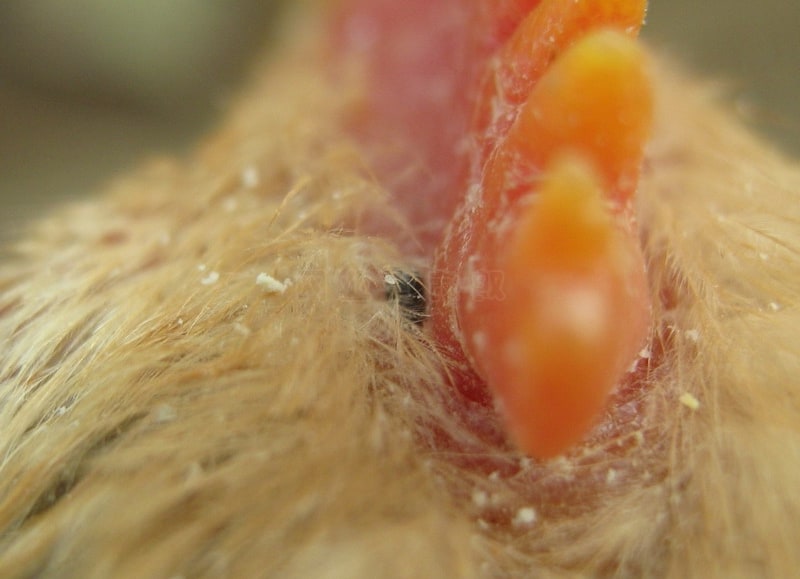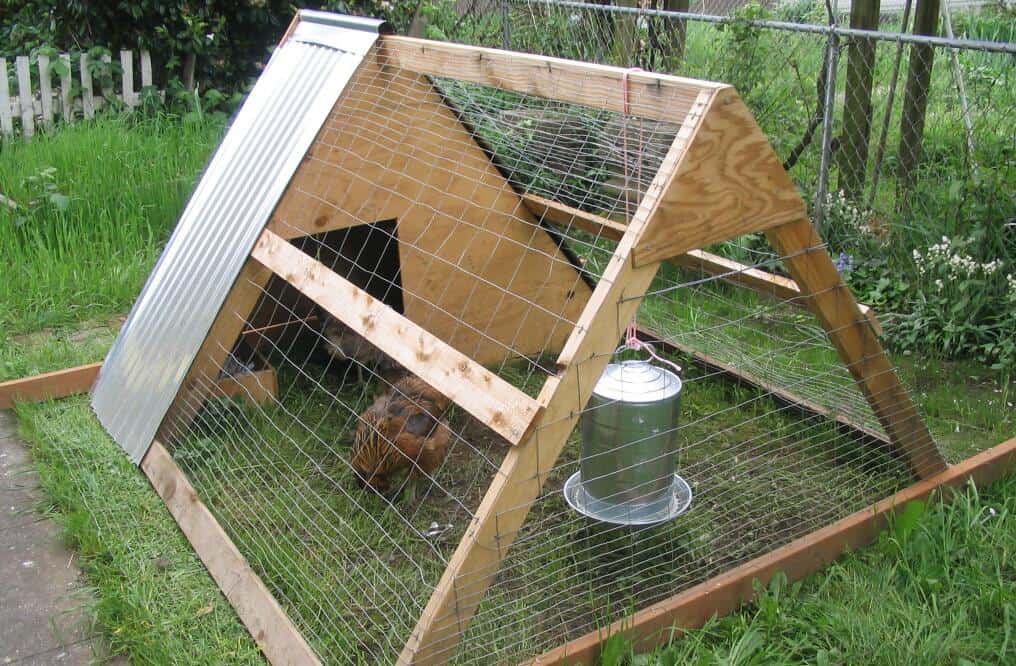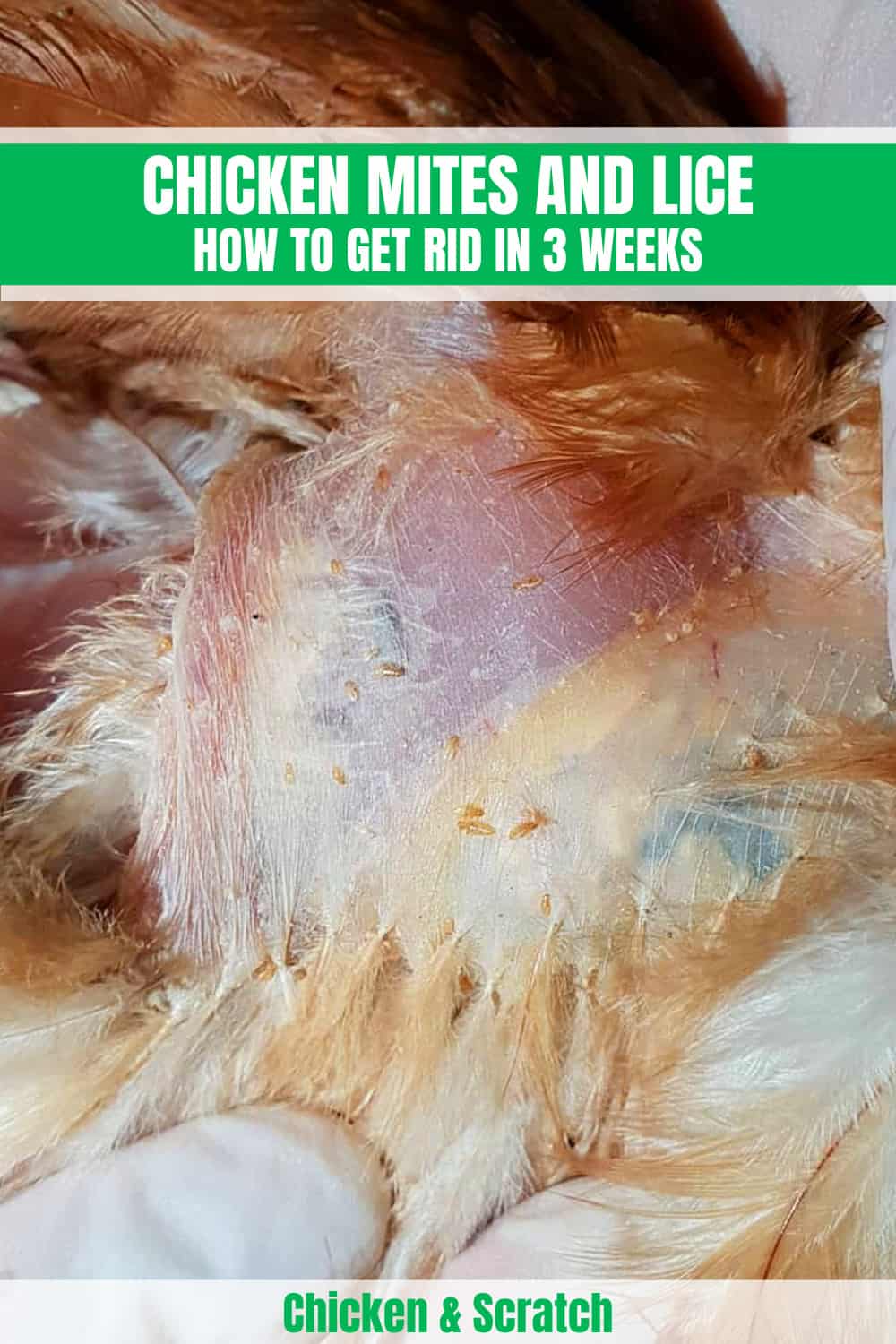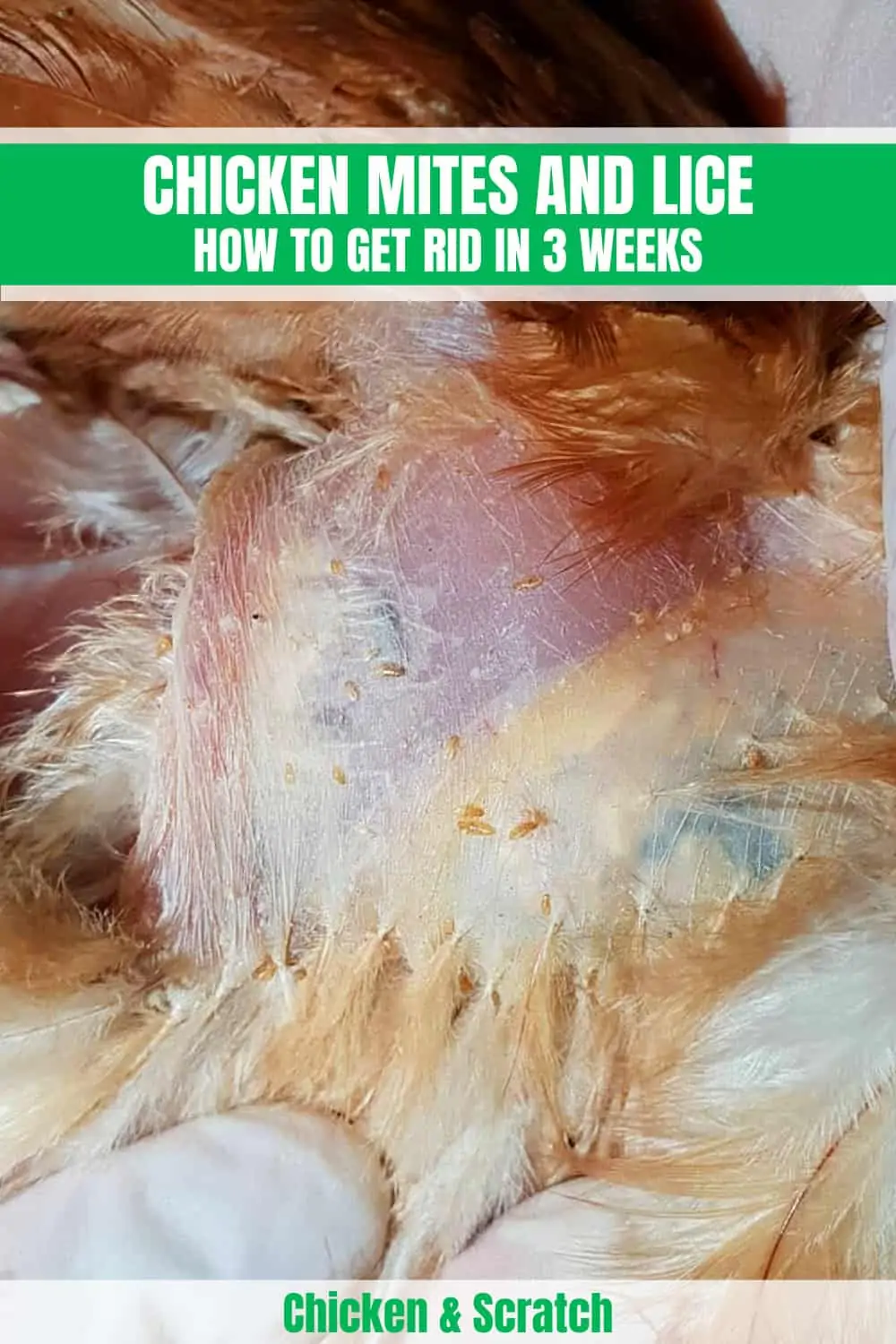Have you noticed that your chicken flock is a bit ruffled lately? Maybe you’ve noticed your girls have started developing bald spots or have less energy. It might be because of a very common problem for backyard flocks. They might have developed chicken mite or lice infestations.
It’s not a reflection on how well you care for your chickens – mites and lice can get into your coop in a surprising amount of ways. It’s always awful to discover that your backyard beauties are suffering, so I put together this guide to help you, help them.
I’ll tell you about the most common types of lice and mites you’re likely to find, how to treat them and I’ll give you tips on how to prevent problems in the future.
What are chicken mites?
Mites are nasty little eight-legged creatures that drink your chicken’s blood. They often appear as tiny red, brown or black specks at the base of the feathers. If an infestation is left untreated for a long time, your birds can become anemic and even die.
Northern fowl mites and Red Roost mites are the most common types of mites found in American flocks.
Northern fowl mites can significantly reduce egg production in your flock. Older hens are particularly vulnerable as they can’t withstand a serious infestation and are more likely to perish.
Red Roost mites tend to become more active at night. They like to live in crevices around nesting boxes and roosts, coming out to feed and seriously hurt your hens. They particularly like to latch on around the vent area, causing irritation at the site. You might notice dirty feathers around the vent if this is the case.

Tropical fowl mites are similar to Northern fowl mites, but these mites can also attack humans. Infestations can be severe, and the cross-infestation ability makes these mites a big nuisance.
Scaly leg mites attack the feet of your hens. These mites eat the keratin in the scales that cover the feet. If left untreated you will notice that the scales become white and flaky. In the most serious cases the Scaly leg mites can also attack the combs of your birds.
What are chicken lice?
Chicken lice are six-legged bugs that live in the feathers of chickens. Unlike mites, they do not feed on blood. Instead they eat the dead skin and detritus that collects around the base of the feathers. If you lift up feathers, you can often see the straw-colored lice scattering away. Eggs will be located around the base of feathers.
Chicken lice favor warm, moist places. You’ll find them around your chicken vents, under the wings and on the breast. Eggs will hatch after 4-5 days, then the lice will live as nymphs for 12 days, then as adults for a further 12 days. Poultry lice don’t hop – they climb to new birds through close contact.
Poultry lice or chicken lice cannot be transmitted to humans, and exposure to them will not give you headlice.
How can you tell if your chickens have an infestation?

First of all, it’s a good idea to physically check your flock for chicken lice and mites once a month or so. Pay particular attention to any broody hens you have. They dust bathe less often as they stay close to their nesting boxes, which can encourage an infestation.
Check-in between feathers on the skin of the birds. You may see tiny little dots moving around, or clusters of eggs (nits) at the shafts of the feathers.
You might notice your chickens behaving differently. They may lose weight, become listless, lose feathers or lay fewer eggs than normal. Make sure you inspect their feet, too. Some critters feed on the scales of the feet, which leads to discoloration and flaking.
If your coop is infested with the Red roost mite, you may notice your hens are reluctant to roost at night. This is because the mites attack from their hiding places when it gets dark. I wouldn’t want to go to bed in a mite-infested roost, either!
How to treat chicken lice and mites

Remove your birds from their usual living quarters. Put them into a chicken tractor or let them roam while you decontaminate the space. Treat your birds while they are away so you’re reducing the number of lice and mites in one go.
Strip out your nesting boxes. Some chicken farmers recommend treating the boxes with diatomaceous earth, while others recommend Neem oil. You could also pour boiling water over joints and roosting perches. Check in with specialists to see which approach will work best with your farming philosophy.
If you have a problem with Scaly leg mites, cover your chicken’s legs with Vaseline. Apply it against the grain of the scales so it gets into every nook and cranny. This will suffocate the mites. Remember to reapply this over a number of days to catch any new mites as they hatch.
Ensure you have plenty of room for your birds to dust-bathe. This natural behavior works dust down to the base of the feathers and smothers mites and chicken lice. Let the birds help themselves along with your treatments. Some keepers add diatomaceous earth to favored bathing spots.
If it’s too wet to have dust in your coop, mimic the suffocation by spraying your birds with a mixture of water and regular cooking oil at a 2:1 ratio. Do this at night after the chickens have roosted. Gently lift up their feathers and spray close to the skin. Repeat this process every 6-7 days to break the life cycle of the lice and mites.
Some farmers prefer to use commercial treatments such as Pestene, which is harmless to chickens but dehydrates the mites. Remember to repeat the treatment every 7 days until there are no more signs of new mites or lice.
If you are concerned that blood-sucking mites have depleted the health of your chickens, there are things you can do to help them recover. Keep plenty of fresh water available and feed them a diet rich in iron to help combat the anemia. Try fresh green vegetables like broccoli orchard.
How to prevent chicken lice and mites

Mites and lice are introduced to flocks by native birds, rodents and sometimes even by you! The bugs may ride into the coop on your boots or clothing. It’s a relatively common occurrence, especially if you have a free-range flock, or keep your birds in a small space.
Avoid letting other poultry keepers into your flock’s living quarters where possible. This will help avoid cross-contamination for both you and them.
Clean your coop regularly by removing and replacing all nesting material. If you do have an infestation, burn the material or bag it tightly and bin it. Putting the material in compost or garden will only help perpetuate the infestation.
Give your birds plenty of space to dust-bathe, as this is natural lice and mite deterrent.
Consider adding pungent herbs to your nesting material. Some chicken farmers swear by this as a rodent and pest deterrent. As rodents often carry mites and lice, any method you use to keep them away from your flock will help reduce the chances of an attack.
Another natural method is to add fresh garlic to both your water and feed troughs. Garlic has natural anti-parasitic properties and is said to deter pests as it makes the blood taste unappealing. Strange, yes, but it can’t hurt to try!
Be vigilant about keeping feeding areas tidy. Don’t allow spilled feed to build up around the yard. This will encourage rodents and other creatures to venture inside and share their mites and lice with your girls. Use a fine-mesh chicken fence around the base of your yard as a further deterrent.
Wrap up
I hope you’re feeling a little more confident about coping with chicken lice and mites after reading this article. It can be a little daunting when you first realize your precious flock is suffering. It’s reassuring to know that it happens to every poultry flock at some point.
Here are my top take-away points for you:
- Chicken lice and mites may appear as small dark specks at the base of feathers
- Pale, lifted scales on the feet may indicate an infestation
- Watch out for listlessness, bald spots, ruffled feathers and dirty vents as signs of lice and mites
- Be vigilant about cleaning the nesting boxes, including treating the boxes and roosting perches
- Create plenty of space for dust-bathing
- Keep the coop, feeding areas and foraging spaces free from rodents by removing spilled feed
- Treat chicken lice and mites every 7 days for 3-4 weeks to break the life cycle of hatching eggs
I would love to hear more about how you’ve treated chicken lice and mites in your flock. Please leave your best tips below so we can all learn from your experience.

Joseph Hudson has been raising chickens for over 15 years. In 2018, he completed the Agriculture & Natural Resources program at Mt. San Antonio College. He currently raises over 1400 chickens on his 7.5-hectare farm. He keeps sharing his experience on raising healthy and happy chickens on Chicken Scratch The Foundry.









How do I make a dust bath for my girls, when I get them, and do I had diatomaceous earth to it?
hi, you will need mask (for you) grab chicken and hand dust the bird with the powder form, also you can have a section in the coop or outside for her to dust herself.Like it says you need to do this often and make sure coop is clean often. I use masons sand in coop. I don’t have mites or lice on mine..Hope this helps
I have got very important lessons from your writings and informations, thank you so much.
Ive noticed little red specs/dots around some of my chickens and ducks faces, usually around eyes and ears, they do not move. Is this a form of a tick or mite ….how do I safely remove them from my birds and or coop
Those sound like stick tight fleas.
3 week old chicks have big butts that feel like a water balloon. First time hatching out chicks, normal or how do I treat if they are ill? Thanks a zill. Looking for answers in all the wrong places for a while. Can you help?